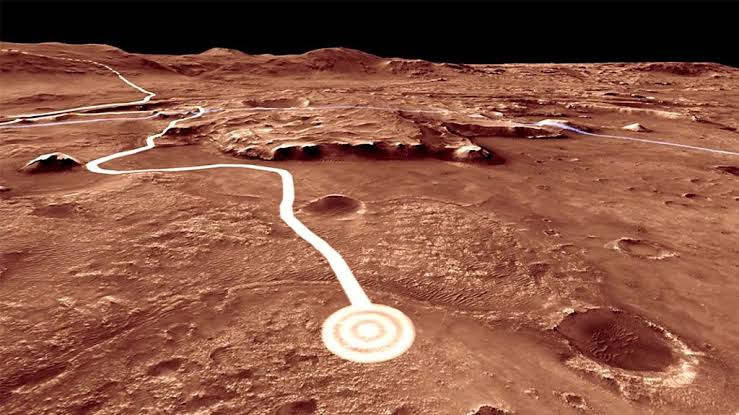Is there Life on mars?

Is there life on Mars?
For more than a century, people have been wondering if there is life on Mars. It seems that in the next five years, people will find the answer to this question.
In the last years of the 19th century, American astronaut Percival Lowell thought he had seen canals on the surface of Mars. According to him, this observation was a proof that not only life could exist on our nearest planet, but also that there may be a civilization that is superior to our civilization.
Percival Lowell's remarks opened the door to a new fantasy world, and HG Wells' famous novel, The War of the Worlds, was published, followed by a number of stories and films in which it was shown that Creatures from Mars take over the world.
What did the first space mission see?
When research missions orbiting the Red Planet in the 1960s and '70s disproved the notion that there were canals on Mars, there was a sense of frustration in people.
NASA's Viking space mission photographed Mars, showing the planet as a deserted and cold place.
But despite this frustration, people found the Viking images very interesting because they liked the mysterious beauty of Mars.
Many years ago, scientists thought they had found traces of a more advanced civilization on Mars than on Earth.
Perhaps that is why people were anxiously awaiting the analysis of the red clay samples from Mars collected by the Viking One mission. One of these soil samples was an analysis that revived the hope that life existed on Mars. But that analysis was soon rejected.
In the 20 years since the analysis, most people have been of the opinion that Mars is a planet filled with red dust where no life is found.
When did life on Mars begin?
Since then, during the 1990s and 2000s, there have been a number of space missions that have taken images of Mars, suggesting that the shape of Mars we see today was not always the same.
In addition, the images suggest that there may be ice beneath the surface of Mars in many places, and that the surface may have had some magnetic properties, such as gravity.
An early view of Mars:
Deserted but calm,
At the end of the first decade of this century, information gathered by space missions began to raise suspicions that Mars would look exactly like our Earth 3.8 billion years ago. The new information reinforces the idea that millions of years ago the atmosphere of this red planet was very dense and there were lakes and deep seas.
If all of this were present here, it would mean that life would have appeared on this planet sometime, just as the first signs of life began to appear on Earth.
But after this initial favorable environment was created, there was a catastrophe on Mars which caused the magnetic field around it to disappear and the planet lost its water and favorable climate.
What are the prospects for life on Mars today?
The clearest evidence so far is that there is water on Mars.
It is unlikely that life exists on Mars today, but it is not impossible.
For any place to live, it is necessary to have water in liquid form. Now the evidence is growing, and last year NASA had the strongest evidence that the presence of water on Mars is no longer just an idea. Although the amount of water is very small, the chances of water being present on Mars have increased significantly.
Nineteen years ago , NASA discovered marks on the surface of Mars that indicate paths where water was flowing. But the temperature on Mars is so low that the idea that these marks were formed by the flow of water was rejected.
Scientists then observed that in a few months, the markings on the surface of Mars have either increased or decreased. This means that the reason why these marks are forming is still present on Mars.
Will the invention of European countries, Exomars, prove the existence of life on Mars?
The latest information in this regard came to light last year, which is slightly different from the previous information. This time, scientists have found evidence that cracks on the surface of Mars and traces of flowing water also contain salts. This observation is especially important because salt can melt ice, after which ice can become water and flow to the surface.
This discovery proves that the Red Planet is not asleep, but that some kind of geological or geological change is taking place there. Now the possibility has increased that life on Mars may exist in the form of simple bodies.
But on the other hand, given the hard, dry surface of Mars and the constant bombardment of radiation on it, the possibility that life still exists on Earth seems unlikely. However, the latest mission information is so strong that scientists will continue to search for life on Mars for years to come.

 My First News Item
My First News Item My Nine News Item
My Nine News Item